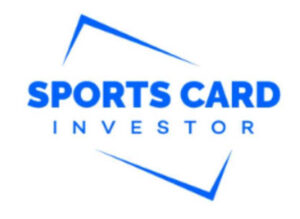
Comic Book Investing to Sports Card Investing: A Primer (Part 1)
This guest post came through our Article Submission Program. Thoughts and opinions are those of the author.
Sports cards are experiencing a renaissance of sorts. With the re-discovery of the hobby by many former collectors, attention from major influencers like Garyvee, and rapid increases in certain card values, sports cards are back in the spotlight. Interestingly, this resurgence is very similar to another hobby’s rise, comic books. With the golden age of comic book movies creating renewed interest and driving up the value of certain comics, both hobbies have been charting a similar trajectory. As such, we are seeing a lot of collectors that have been investing and making money in comics now transitioning to sports cards.
This primer will highlight some common concepts and terms found in the comic world that have a similar counterpart in sport cards, in the hopes of making the transition from comics to cards (or visa versa) a smoother experience. Enjoy!
[adcards]
Grading: PSA and BGS vs. CGC and CBCS
Let’s start with grading. This is an area between the two hobbies that shares similar features, with just enough nuanced differences to warrant a deeper dive. As a comic enthusiast, you may be used to the traditional grading scale of 0-10, with 9.8 being the gold standard from a value standpoint, and two companies vying for the top spot, CGC and CBCS. In sports cards, card grading scales differ between the two big companies, PSA and BGS. PSA uses a 1-10 scale, with a PSA 10 being the equivalent to a CGC or CBCS 9.8. BGS, Beckett’s grading service, also uses a 1-10 scale — the difference being that the scarcity of BGS 10s “Pristine” makes the BGS 9.5 comparable to a CGC or CBCS 9.8. Then of course there is the ever harder to attain BGS 10 “Black Label,” a special label only given to modern cards that achieve a perfect 10 grade on all four subcategories.
From a resale standpoint, PSA is equivalent to CGC in the comic world, generally commanding higher prices and demand than their BGS counterparts. Let’s take Ken Griffey Jr’s classic 1989 Upper Deck Rookie Card: A PSA 10 generally fetches between $515-$575, while a BGS 9.5 sells for between $250-$350 depending on sub grades. It’s worth noting that BGS 10 will out price PSA 10, but they’re very scare.
Value: First Appearance vs. Rookie Cards
In comic books, one of the signature factors in the value of a book is the first appearance of a significant character. As it translates to sports cards, a player’s rookie card will be the equivalent to a first appearance comic. And generally, those rookie cards will give you the most potential for future growth. One key difference is that comic characters only have one comic where they truly appear for the first time. Players can have a number of rookie cards, with varying levels of desirability. Let’s take, for example, Lebron James: Lebron James 2003 Topps Chrome PSA 10 rookie card regular sells for over $2,000, while his regular 2003 Topps PSA 10 rookie card sells for around $400. Both are great cards, but desirability and rarity play a large role in the price disparity.
Buying and Selling Timing: Movie Trailers vs. Playoffs
One important similarity with some nuanced distinction between the two markets is the timing of when to buy and sell. The comic market is volatile and prices can react to a number of factors. In recent years, the single biggest driver for increases in comic value is movie news. When a comic character or property is announced for a movie, a cycle is initiated: on announcement, associated books for that movie see an initial increase, and generally this is a good time to sell. There is a settling effect that occurs sometime after that, where people have moved on, which can indicate an opportune time to buy.
The next significant event would be the release of movie images or trailers — which, depending on fan reaction, would be another selling opportunity. You generally have from that point until the movie premieres, to realize the highest prices for those comics, generally followed by a slight downturn after the movie has been released.
Sports cards, and more specifically, athletes, see similar ebbs and flows in their card values throughout the year. With a new rookie, the first autographs or serial numbered cards released for that individual can see an initial bump based on the associated hype. This may continue and build based on performance once the season begins. Then, generally, a player’s cards will experience a cooling off period during the off-season.
Another scenario to factor in is playoff and championship runs. These periods of time can provide increased interest in a player, and result in reactionary and quick spikes in value. So while the circumstances may differ, the opportunity to see dramatic swings in prices realized remains the same.
One sentiment that is echoed in both the comic and sports card communities is the idea of buying what you like. We are experiencing a boom period in both the comic and sports card hobby. But at the end of the day, with the overwhelming amount of information and potential things to buy, you can’t go wrong with going after cards and comics you wouldn’t mind getting stuck with if the bottom falls out.
Thanks for joining me for the first installment of comics to cards, and remember, buy what you like!
Have you ever invested in comics? What similarities or differences to you see? Leave a comment below or connect with the author, Jason, through his website www.hi5comics.com.
Ready to take your sports card investing to the next level? Join my Membership Program now for card picks, analytics, premium community access and much more!






